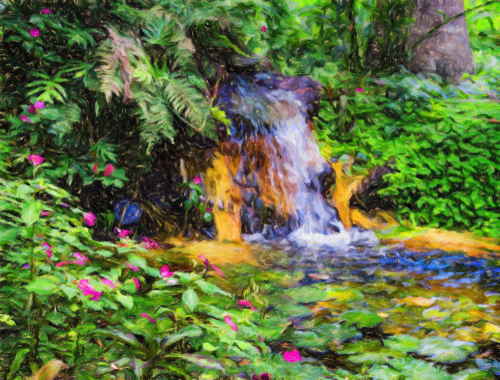Why My Heart is in the Amazon Rainforest, and Your Heart Should Be There Too
By Thornton W. Blease
Floating up a tributary of the Amazon River I watch a group of young Amazon River Otters splash along the banks, as the river dances through the indigenous Peruvian villages. “The River of Life,” I fondly call this black waterway, a swaying gift to the people of the villages. I pass a fisherman in a dugout canoe. He waves his small catch in the air and gives a big toothless smile filled with enthusiasm for life as he breathes the fresh, unpolluted air.
Life for the people of the river is simple and unencumbered, filled with genuine respect for each other, the people of the indigenous villages share a sense of community through a lifestyle extending back many, many generations.
When I ask people what they know about the Amazon, many reply,
“If you have Amazon Prime, you can get free shipping on your order.”
This is sad.
If I were asked what I know about the Amazon, I might reply, “How much time do you have? My heart is closely tied to the Amazon. Let me tell you what I know…”
The Amazon is the longest river in the world and is made up of 1,100 tributaries. Hence, the Amazon Basin is the largest tropical rainforest, sprawling across four million square miles in nine South American countries, mainly in Brazil, but also Peru, Bolivia, Columbia, Ecuador, Guyana/ French Guyana, Suriname and Venezuela.
It is home to millions of different plant and animal species. Did you know that 70% of the Earth’s animals and plants can be found in the Amazon Rainforest, including pink dolphins and the elusive jaguar? The region is incomparable in its biodiversity and exotic beauty.
Scientists believe there are potentially millions more plant and animal species that have yet to be discovered. Yet, with rainforest destruction it is estimated that 137 species are eliminated every day. While, this is an estimate based on research, it is an alarming statistic. Over a quarter of the medicines we use today have their origins in the rainforest, a startling fact since only 1% of the rainforest plants have been examined for their medicinal properties. Imagine what else could be there? I would wager the best chances we have of curing “incurable” diseases, lie in the rainforest.
The rainforest helps regulate the world’s water cycle. In fact, the Amazon’s daily freshwater discharged into the Atlantic is enough to supply New York City’s freshwater needs for nine years. Trees play an important part in the water cycle, grounding the water in their roots and releasing it into the atmosphere. Half of the water is held within the plants. Without them, the climate may become dryer, making it difficult to grow foods.
Today everyone discusses Climate Change, but very rarely does anyone talk about how
deforestation drives climate change, Removing trees deprives the forest of its canopy, which blocks the sun’s rays during the day and hold in heat at night.This disruption leads to extreme temperature swings that can be harmful to plants, and animals (including humans). Trees also absorb large amounts of greenhouse gasses. Fewer forests mean larger amounts of greenhouse gasses entering the atmosphere.
The Amazon is called the “Lungs of the World.” In addition to absorbing greenhouse gases, more than 20% of the world’s oxygen is produced in the Amazon Rainforest. As one of the oldest continuous ecosystems, it plays a significant part in the health of our global environment by “digesting” and converting carbon dioxide into oxygen.
Many view the Amazon Rainforest as a vehicle to supply valuable lumber, mining for oil and other natural resources, or land to expand farming. Yet the true wealth of the Amazon is enclosed within the canopy of trees that are the lungs of the world, and in the river, as it tells its tales. Tales of an individual fisherman as he is spiritually guided by the coffee-colored sheet, rippling like a powerful serpent, and then gently cradling him as he winds through the forest. Tales that hold the Spirit of the river within the heart and souls of the people living along its banks as it dances from village to village. These are tales that must be protected for future generations, and not sacrificed for the sake of economic advancement.


